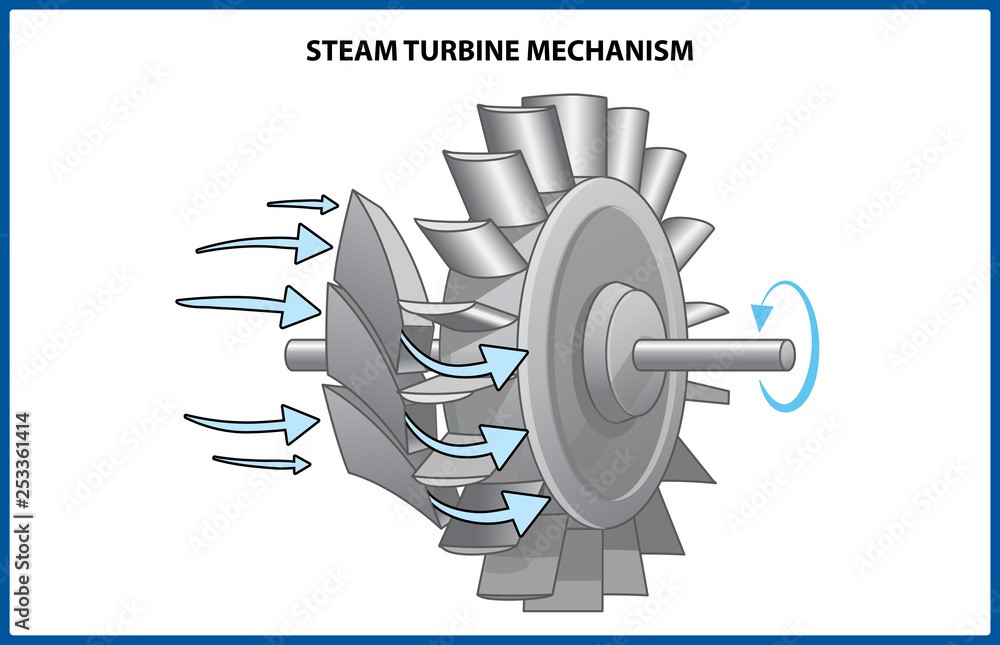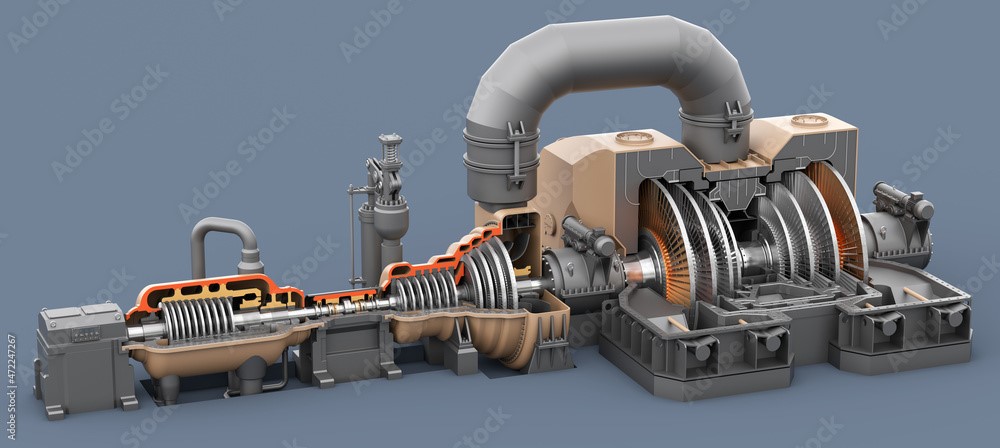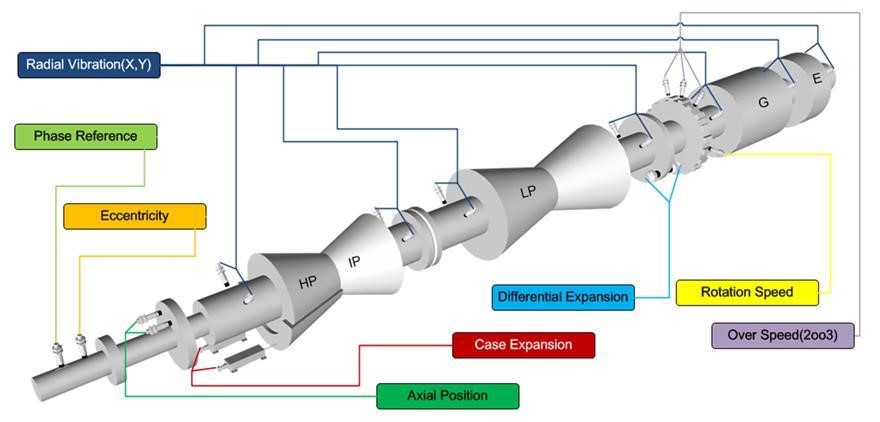P.S. Krishna
ISAB
(Senior Life Member)
Introduction
This article’s focus is on the young budding engineers who are in the process of moving from the academic world to the industry world. This is the time when emerging technologies are speeding up. The article gives them some ideas as to -,” WHAT TO EXPECT IN INDUSTRIAL SCENARIO TODAY.”
In this context, we discuss a case study of condition monitoring on a steam turbine (used in a Power generation facility)
Towards the end of the article, there will be a short write-up on the role of emerging technologies with a special mention of AI’s role in condition monitoring.
A brief description of key terms which appear in this article will be relevant as a refresher.
Thermal Power plant with steam turbine
A thermal power station is a type of power generating station in which heat energy is converted to electrical energy. In a steam-generating cycle, heat is used to boil water in a large Boiler to produce high-pressure steam, which drives a steam turbine. This turbine is coupled to an electrical generator.
. As hot, gaseous steam flows past the turbine’s spinning blades, the steam expands and cools, giving off most of the energy it contains. This steam spins the blades continuously, consequently, the blades convert most of the steam’s potential energy into kinetic energy.
This kinetic energy finally rotates the turbine’s blades. Since steam turbines generate rotary motion, it is therefore convenient to rotate alternators for electrical power generation
Steam turbines in power generation mode can range in size from as much as 1800 MW in nuclear plant service to less than 10MW when used for on-site power generation as part of a process plant
Role of Turbine blades
A turbine’s blades are designed to control the steam’s speed, direction, and pressure as it passes through the turbine. For large-scale turbines, dozens of blades are attached to the rotor, typically in different sets. Each set of blades helps to extract energy from the steam while also keeping the pressure at optimal levels. This multi-stage approach means that the turbine blades are reducing the pressure of the steam by very small increments during each stage. This, in turn, reduces the forces on them and significantly improves the overall output of the turbine. An important factor with respect to blades is when blades get silica deposits on them, causing unbalance and eventual damage. The steam turbine is a member of the Operational Technology
Operational technology (OT) architectures comprise programmable systems or devices that monitor and control physical processes and infrastructure components. OT can span the cyber-physical from industrial machines, such as Turbines wind turbines, to medical devices, such as diagnostic and monitoring systems. Operational technology (OT) combines hardware and software that detects or causes a change, through the direct monitoring and/or control of industrial equipment, assets, processes and events.
What is Condition monitoring? (CM) is a maintenance approach that predicts machine health and safety through the combination of machine sensor data that measures vibration and other parameters (in real-time) with state-of-the-art machine monitoring software
(it may be relevant to mention drawing a parallel with the Electrocardiogram used for heart condition monitoring while discussing the Condition monitoring of the Machine)
Problems in steam turbines which reduce machine efficiency and output, such as deposits on blades and erosion of internal clearances, can be detected and monitored using condition monitoring by performance analysis. Shaft vibration and axial movements are prominent maladies.
There are many tasks that comprise predictive maintenance. Vibration analysis is one of the most crucial. It is extremely effective in identifying the beginnings of equipment wear and potential breakdowns or degradation in processes — the backbone of predictive maintenance. With the right equipment in place, vibration analysis can also enable root cause analysis, zeroing in on the exact cause of an impending problem — critical in equipment with multiple rotating parts
Once the turbine is on load, it is essential to look for front and rear shaft vibrations, the drain valves, steam efficiency, inlet steam parameters, turbine RPM, generator output, generator frequency and the power factor as well
While rotating, turbine blades experience vibration which generates stress and causes damage of the system. The blade vibration amplitude and frequency have a profound impact on integrity, operations, performance and fatigue life. The accurate estimation of blade vibration is a crucial issue.
Turbine Supervisory Instrumentation is a key player in the Condition Monitoring systems of turbines
Why is AI useful for monitoring information?
Machine learning algorithms can be used to analyze large amounts of data and identify patterns that would be difficult to detect manually. AI-based models can analyze data from multiple sources, such as logs, metrics and traces, and correlate that data to identify the root cause of an issue.
One handicap is the absence of experience records of experts who are no longer in service- this tribal knowledge gap is a concern.
It is said analysis is only as good as the data. The data is only as useful as the analysis it can produce – the true test of the quality of data is the quality of insight that can be produced. Operational technology (OT) and real-time data are produced in large quantities but their value is still largely untapped from an enterprise operational excellence perspective. This data has been underexploited mainly because it is too granular and not easily amenable to use in management systems. A platform that surfaces only actionable insights from this data such as warnings, root cause explanations, and time estimates would make the data more consumable for management and operations teams
How does AI help in condition monitoring
Recently, Artificial Intelligence (AI) has revolutionized the modern industry and is widely used for the purpose of intelligent condition monitoring. The AI assists in extracting useful knowledge and making appropriate decisions from the measured signal in the manufacturing system
Some extracts of trends in AI-related to condition monitoring include
-AI-based modelling of the relative vibration of a steam turbine shaft bearing is presented.
-The effect of operating parameters on the bearing vibration is studied.
-AI model-based operational strategy for vibration reduction of the steam turbine shaft bearing is developed.
Conclusion
The Key Takeaways:
- Importance of thorough knowledge of operating technology for effective teamwork with Information Technology –( Converse is also true, IT must have more than a working knowledge .of OT)
- The importance of multidisciplinary knowledge and flexibility -are vital in the context of today’s Emerging technologies environment.

Simple overview of a Thermal Power plant
(Figure acknowledgement electricaleasy.com)
Figure 1

(Figure Acknowledgement-
https://stock.adobe.com/in/search?k=steam+turbine&asset_id=253361414)
Figure 2

Internals of a Turbine unit
(Figure Acknowledgement –
https://stock.adobe.com/in/search?k=steam+turbine&asset_id=472247267)
Figure 3

Key monitoring points in a Turbine
Figure 3
(Figure Acknowledgement: Reference: https://vibravista.com/applications/steam-turbine/)
References:
(Acknowledgement)
Source 1
Source 2

